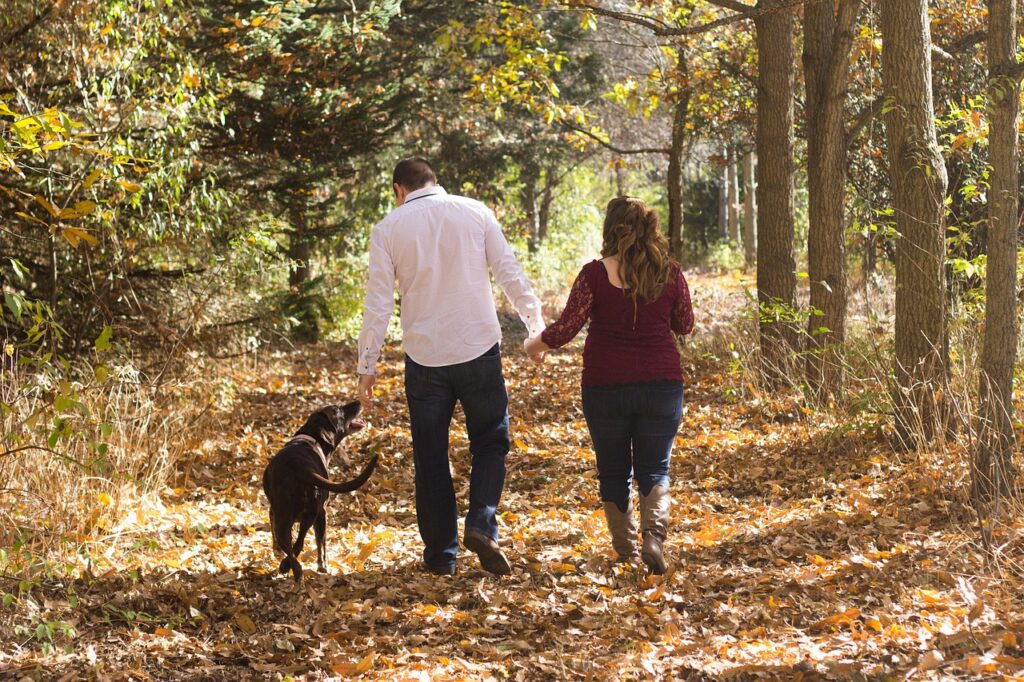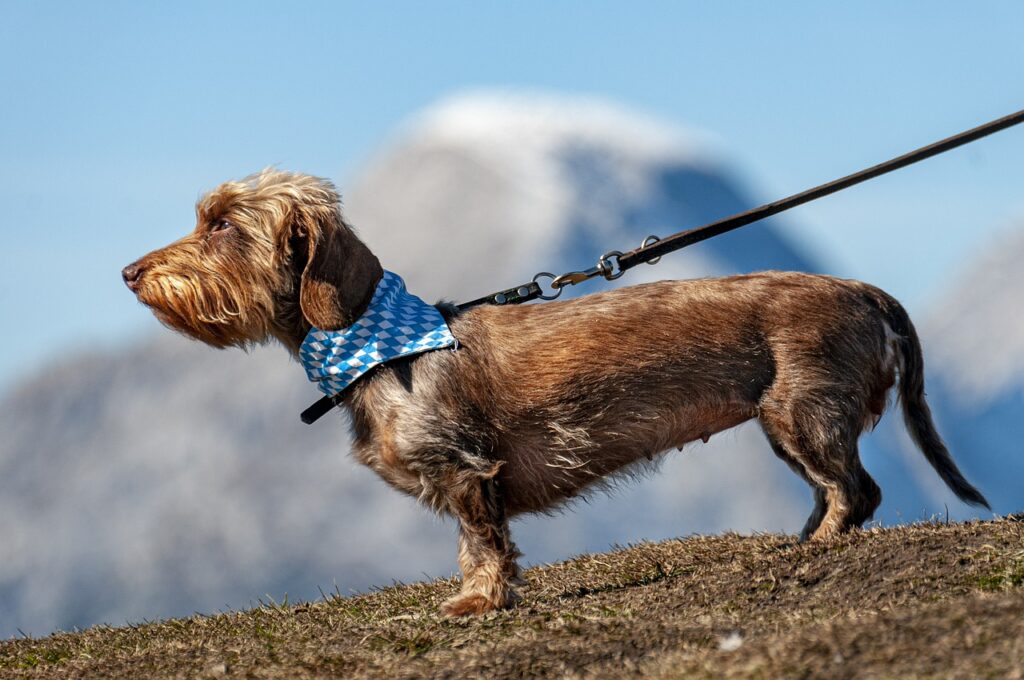Setting off on a hiking adventure with your four-legged friend adds a whole new dimension to experiencing the great outdoors. To ensure your dog’s comfort and safety on the trails, it’s crucial to come prepared with the right gear tailored for your pet. From the appropriate wearable accessories to the essentials for nutrition and hydration, every piece of equipment plays an important role in making your hike together enjoyable and worry-free.
Think of your dog’s hiking kit as an extension of your own; it should include reliable identification and tracking devices, hydration solutions, and health and cleanup supplies. Proper planning for canine carrying and conveyance must be factored in, particularly for longer treks. Additionally, thoughtful preparation for shelter, rest, and adhering to the Leave No Trace principles for responsible hiking will set the stage for many memorable trail-blazing treks with your loyal companion by your side.
Hiking Essentials for Your Dog’s Comfort and Safety
When embarking on wilderness adventures, it’s not just your needs you have to consider. Your furry friend is just as important and requires his own set of essentials to make the hike enjoyable and safe. We’ve compiled a range of items categorized into wearable gear, nutrition and hydration necessities, and health and clean-up supplies that you should never hit the trail without.
Proper Wearable Gear
Ensuring your dog is properly outfitted is the first step to a successful hike. A sturdy collar or harness is a non-negotiable item. It should have visible ID tags and should fit well—tight enough to be secure but loose enough to slip a finger under. The materials matter too, as a bright, easy-to-spot collar can make all the difference should your dog wander a bit too far. And remember, choke collars are a big no-no, as they pose a strangulation risk.
Leash-wise, you’ll want one that’s built to last. Leather and nylon are excellent choices, offering durability in rough trail conditions. While extendable leashes provide freedom, they should be used with caution to maintain control, and always have a spare just in case. Remember that the right dog leash will give your furry friend some room to explore while ensuring that you don’t lose sight of them.
For paw protection, investigate dog boots—especially if you’re trekking on icy or rugged terrains—and don’t forget a cooling vest for the heat or an insulating jacket for colder climates to keep your pup comfortable in all weather conditions.
| Gear Type | Description |
|---|---|
| Collar/Harness | Should ensure visibility and have secure ID tags |
| Leash | Durable materials like leather or nylon, with a spare for emergencies |
| Dog Boots | Protects paws from difficult terrains |
| Cooling/Insulating Vests | Regulates body temperature in extreme weather |

Nutrition and Hydration Equipment
Your dog’s energy and hydration levels are going to take a hit on the trails, just like yours. It’s advisable to carry at least 8 ounces of water per dog per hour of hiking. Freezing water bottles beforehand can help keep your dog cool on the trail. Avoid stagnant water sources, to prevent sickness from bacteria or parasites. Instead, bring along your own water and perhaps a portable purification method.
For nutrition, pack an adequate supply of their regular food and opt for nourishing snacks that deliver quick boosts of energy without being too heavy. For example, for treats, you can opt for homemade pumpkin dog treats over the commercial treats. Collapsible bowls are stars of convenience, easily hooking onto your pack when not in use. With these, you can ensure that your four-legged companion stays happily hydrated and energized throughout your adventure.
Health and Clean-up Supplies
The great outdoors is unpredictable, which is why a canine first aid kit stocked with essentials such as hydrogen peroxide, bandages, and a pair of tweezers is a no-brainer. Dog-friendly insect repellent and tick prevention are also vital, as bugs can be more than mere annoyances on the trail. And, as responsible hikers, cleaning up after your dog is paramount. Poop bags are a must, with some hikers opting for a trowel or other portable waste solutions for off-trail excursions.
Your dog’s exposure to the sun could be more than what he’s used to, so consider packing sun protection essentials for breeds especially prone to sunburn, ensuring their skin stays healthy. Many dogs are also more visible at night, thanks to reflective jackets, collars, and leashes, which can make a significant difference during dusky hikes or unexpected night time walks.
Gear for Canine Carrying and Conveyance
When you’re venturing into the wilderness with your four-legged companion, making sure you have the right gear for carrying and conveying your dog is just as important as packing your own backcountry essentials. Not all dogs can handle the rough terrain, long distances, or challenging weather conditions without a little assistance. Plus, having the proper gear can make the experience more enjoyable and safe for both of you.
Some trails can present unexpected conditions, such as water crossings or rocky areas, where your pup might need a bit of help. And, let’s not forget, even dogs that are in prime hiking condition may get tired or need a lift from time to time. That’s where dog packs, carriers, and safety devices come in handy. With the right preparation, your dog can be a happy and willing participant on the trail, ready to explore the wilderness alongside you.
Dog Packs and Carriers
Think about it: your dog might really dig the idea of carrying their own supplies. Cool, right? A doggy backpack allows your pup to tote his own food, water, and toys. Just remember, if your dog is younger than a year, you’ll want to hold off on the pack to avoid any developmental issues. For puppies and dogs under this age, or for those with health concerns, a comfortable and specially designed carrier can be a lifesaver — or just a paw-saver.
Adjustable harnesses are a must to ensure that the pack fits well and doesn’t cause any chafing or discomfort. For the tinier tail-waggers or our fellow companions with mobility challenges, specialized carriers can provide a comfortable way for them to join in on the adventure without over-exerting themselves.
| Gear Type | Benefits |
|---|---|
| Dog Backpack | Carries pet essentials, gives dogs a sense of purpose |
| Adjustable Harness | Ensures a proper fit, prevents chafing |
| Specialized Carrier | Assists small or challenged dogs, prevents over-exertion |
Safety and Tracking Devices
Next up, let’s chat about safety and tracking devices. Keeping an eye on your adventurous buddy is key and reflective gear can be a real game-changer when the sunlight calls it quits. Whether it’s a jacket, collar, or leash, anything reflective is essential for those post-sunset trots or predawn jaunts.
Microchips and GPS devices can offer immense peace of mind; they are the MVPs for locating your dog in case they decide to go on an unscheduled solo jaunt. Whether you have a store-bought or DIY collar and leash, consider attaching an ID tag with a durable loop ring to your dog’s collar, engraved with your phone number, just to cover all bases. And for those nautical pups or water enthusiast pooches, don’t overlook the need for a canine flotation device — it’s crucial for safety around bodies of water.
Shelter and Resting Equipment
When the hiking day comes to an end, or you decide to take a break and enjoy the view, having a spot for your dog to rest is vital. Lightweight dog tents not only provide shade but also a personal retreat for your pooch to recharge, which is especially helpful on multi-day hikes or hot, sunny days. And for a good night’s sleep or even a comfy pit stop, a travel dog bed or pad can make all the difference.
Travel beds offer comfort and insulation from the cold, hard ground, ensuring your furry friend gets the rest needed to continue the adventure tomorrow. With these sanctuary spaces, you’re providing a slice of home in the vastness of Mother Nature, catering to your dog’s natural need for a safe and familiar spot to unwind.
Additional Considerations for Responsible Dog Hiking
Preparing for a hike with your dog is about more than just packing the right gear. You need to think about the legal requirements and leave no trace principles to ensure you’re hiking responsibly and sustainably. Not only does this protect the environment, but it also ensures that trails remain open and welcoming for dogs and their owners. Here are some additional aspects you should consider when planning a hiking adventure with your dog.
Training and Preparation
Your dog’s safety and enjoyment during a hike largely depend on proper training and physical preparation. It’s important to introduce your dog to their gear well before the hike. Start by getting them comfortable with wearing a harness or booties around the house. Similarly, if they’re going to carry their own pack, begin with empty packs on short walks and gradually add weight. However, remember to never exceed 25% of your dog’s body weight regardless of their training level, to avoid strain.
Additionally, check that your dog’s collar or harness fits properly—it should be snug enough that it won’t slip off but loose enough for you to slip your finger underneath. Never opt for a choke collar as it can be dangerous. It’s equally important to ensure your dog has a base level of fitness and stamina for trail activities. Gradually increase the difficulty and length of your walks to build up to tougher hikes.

Leave No Trace Principles
Responsible hiking with your dog also means adhering to Leave No Trace principles. This includes planning ahead, disposing of waste properly, and minimizing campfire impacts, among other things. When it comes to hiking with your dog, always pack out poop using bags or, where allowed, bring a trowel to bury waste at least six to eight inches deep and 200 feet away from water, trails, and camp sites. Likewise, keeping your dog on trails helps protect wildlife and plant life. Don’t allow your dog to chase animals or trample vegetation.
Carry collapsible bowls for water and food so you can avoid disposable containers, thereby reducing your dog’s carbon footprint and overall impact on the environment. Also, don’t ever allow them to drink from standing bodies of water, as these can harbor parasites or bacteria. If you must use water from natural sources, purify it first using iodine or a filtration device.
Legal and Trail-Specific Requirements
Before you head out, be aware of the legal requirements and restrictions of your hiking destination. Many places enforce leash laws, so even if your dog is well-behaved off-leash, you may need to keep them leashed for the duration of your hike. Leashes should be durable; leather or nylon materials are appropriate. Although expandable leashes offer movement, it’s safer to keep them short to maintain control.
In addition to leash laws, some trails may have specific restrictions regarding dogs. Check if the area requires certain permits or has limits to the areas where dogs are allowed. Being informed and adhering to these requirements not only keeps you and your dog safe but also ensures that these natural spaces remain accessible to pet owners in the future. Always carry ID tags, considering microchipping, and use a GPS device for tracking your dog. For additional safety during low-light conditions or at dusk, pack reflective gear.
| Training & Preparation | Leave No Trace Principles | Legal & Trail-Specific |
|---|---|---|
| Introduce gear at home | Dispose of waste ethically | Follow leash laws |
| Build physical fitness | Minimize environmental impact | Know pet-friendly areas |
| Ensure proper gear fitting | Use poop bags or bury waste | Carry ID and tracking devices |
| Gradually add pack weight | Stay on trails | Adhere to area restrictions |


